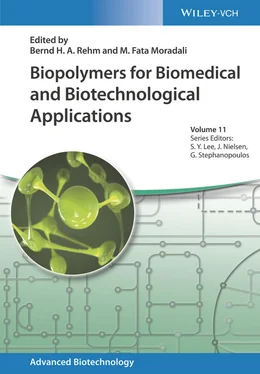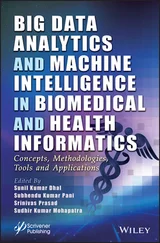1 ...7 8 9 11 12 13 ...25 Some examples of microbial polysaccharides that have been developed at the industrial level and are currently commercialized include xanthan, a heteropolysaccharide composed of glucose, mannose, glucuronic acid, pyruvate, and acetate, produced by Xanthomonas sp., which is used mainly in food, pharmaceutical, and personal care products and in oil recovery [12]; dextran, a water‐soluble glucan secreted by lactic acid bacteria of the genera Leuconostoc , Streptococcus , Weissella , Pediococcus , and Lactobacillus , which is used in food, cosmetic, and medical applications [13]; hyaluronic acid (HA), a linear polymer of glucuronic acid and N ‐acetylglucosamine units, produced by Streptococcus zooepidemicus that is used in cosmetics, pharmaceuticals, and medicine [14]; pullulan, a linear α‐glucan secreted by the black yeast‐like Aureobasidium pullulans that is used as a thickening agent and edible coating [6,15]; and scleroglucan, a water‐soluble β‐glucan secreted by the plant pathogen Sclerotium sp. that is used in applications such as enhanced oil recovery, food, cosmetic, and pharmaceutical [16]. Additionally, there are a growing number of recent reports on newly discovered polysaccharides, with novel molecular structures, obtained from species belonging to different taxonomic groups, which display numerous biological activities (Tables 2.1and 2.3) and may turn into novel applications.
Table 2.1Examples of polysaccharides produced by bacteria and fungi displaying biological activity.
| Microbial source |
Polysaccharide |
Biological activity |
References |
| Bacteria |
| Acetobacter xylinum NCIM2526 |
Fructan |
Antioxidant; anti‐inflammatory |
[17] |
| Bacillus licheniformis T4 |
Fructo‐fucan |
Anti‐cytotoxic; antiviral |
[18] |
| Bacillus tequilensis PS21 |
Heteropolysaccharide (xylose, glucose, ribose, rhamnose, galactose) |
Antioxidant |
[19] |
| Enterobacter A47 |
Heteropolysaccharide (fucose, glucose, galactose, glucuronic acid, acetate, succinate, pyruvate) |
Antioxidant |
[20] |
| Enterobacter cloacae Z0206 |
Heteropolysaccharide (fucose, glucose, galactose, glucuronic acid) |
Antioxidant; antidiabetic; hypolipidemic |
[21] |
| Enterococcus faecium K1 |
Heteropolysaccharide (mannose, glucose, galactose) |
Hypocholesterolemic; antibiofilm; antioxidant |
[22] |
| Lactobacillus sp.Ca6 |
α‐(1,6)‐Glucan |
Antioxidant; antibacterial; wound healing |
[23] |
| Lactobacillus casei SB27 |
Heteropolysaccharide (galactose, glucose) |
Antitumor |
[24] |
| Lactobacillus gasseri FR4 |
Heteropolysaccharide (glucose, mannose, galactose, rhamnose, fucose) |
Antioxidant; antimicrobial |
[25] |
| Lactobacillus kefiranofaciens DN1 |
Heteropolysaccharide (mannose, arabinose, glucose, galactose, rhamnose) |
Antibacterial |
[26] |
| Lactobacillus plantarum BR2 |
Glucomannan |
Antioxidant; antidiabetic; hypocholesterolemic |
[27] |
| Pediococcus parvulus 2.6 |
β‐(1,3)‐Glucan |
Anti‐inflammatory; probiotic |
[28] |
| Pseudoalteromonas sp. S‐5 |
Heteropolysaccharide (mannose, glucose, galactose) |
Anticancer |
[29] |
| Fungi |
| Antrodia cinnamomea |
Heteropolysaccharide (fucose, glucosamine, galactose, glucose, mannose, sulfate) |
Anticancer |
[30] |
| Aspergillus sp. Y16 |
Galactomannan |
Antioxidant |
[31] |
| Candida utilis |
Glucomannan |
Antiarthritis; antioxidant |
[32] |
| Diaporthe sp. |
β‐Glucan |
Antitumor |
[33] |
| Fusarium equiseti ANP2 |
Glucomannan |
Antioxidant |
[34] |
| Fusarium solani SD5 |
Rhamnogalactan |
Anti‐inflammatory; anti‐allergic |
[35] |
| Trichoderma kanganensis |
Heteropolysaccharide (mannose, galactose, glucose, glucuronic acid) |
Anticancer; antioxidant |
[36] |
Biopolymers of microbial origin have been studied lately due to their improved properties and easy production when compared with other natural polymers [4,78]. Microorganisms usually have higher growth rates than algae and plants, and their production processes can easily be manipulated to improve yields and productivity [79]. Moreover, the production process is not climate or seasonal dependent and can rely on the use of low‐cost by‐products or wastes as raw materials [80]. Microbial polysaccharides have unique features and properties that make them suitable to a wide range of applications. More specifically, these biopolymers have been extensively used in food, pharmaceutical, medical, and cosmetic products due to their unique performances as thickening, stabilizing, and binding agents. Some of these biopolymers (e.g. bacterial alginate, gellan, FucoPol) can also have intermolecular interactions that could result in polymeric matrices, allowing the physical manipulation of polysaccharides into structured materials such as gels (e.g. hydrogels) or films that could be used in biomedical applications [4,81]. Adding to this property, the ability of polysaccharides to interact with different inorganic materials represents an important feature for the encapsulation of bioactive substances (e.g. pharmaceuticals for their controlled release) and for the incorporation of nanostructures (such as carbon nanotubes or metallic nanoparticles [MNPs]) to produce enhanced biomaterials (with synergetic conductive or magnetic properties, respectively) [82].
2.3 Commercially Relevant Microbial Polysaccharides: Established Uses and Novel/Prospective Applications
The great diversity of microbial polysaccharide composition and functional properties enables their application in several industrial fields (e.g. medical, food products, pharmaceutical, biomedicine). Although only few are commercialized, among them are pullulan, scleroglucan, xanthan gum, dextran, levan, gellan gum, and hyaluronic acid.
Pullulan is a fungal polymer produced by A. pullulans . It is a neutral, linear glucose homopolysaccharide composed of α‐(1,6) maltotriose units [83,84]. Pullulan presents a unique linkage pattern showing remarkable physical properties, such as high solubility, adhesiveness, forming fibers, and thin biodegradable film capacity, which are transparent and impermeable to oxygen [15,85]. Therefore, pullulan offers a variety of potential industrial and medical applications. For a long time, pullulan membranes/films have been used as coating and packaging material in the food industry, but nowadays they are also being used in dietary capsule formulations. Pullulan‐based oral care products are also being commercialized. Due to the easy decomposition, it is used as coating in the paper industry. Modified pullulan is used as raw material in pharmaceutical applications, namely, nanoparticles, bioimaging, plasma expander, tissue engineering, etc. [84,86].
The cancer therapy and bioremediation are emerging markets for pullulan, due to its bioactivity with some cytotoxic molecules and the adsorption capacity for some heavy metals [84,85]. Moreover, currently several research groups are studying novel pullulan composites blended with other biodegradable materials (e.g. pullulan/dextran, pullulan/rice starch gel, and pullulan/cellulose) in order to obtain desired properties, such as thermal stability, high tensile strength, and emulsion stability [84]. Hydrogels of pullulan have been studied for three‐dimensional (3D) printing of scaffolds [87]. Hayashibara Co., Ltd. (Japan), is one of the companies that commercialized pullulan to be applied mainly as a thickening agent and edible coating.
Читать дальше












